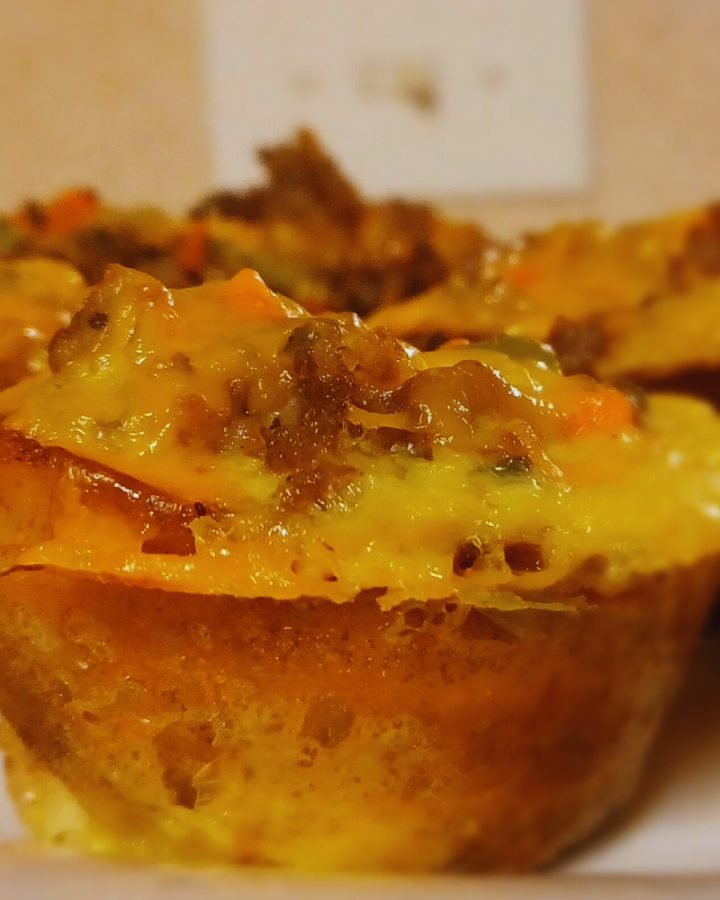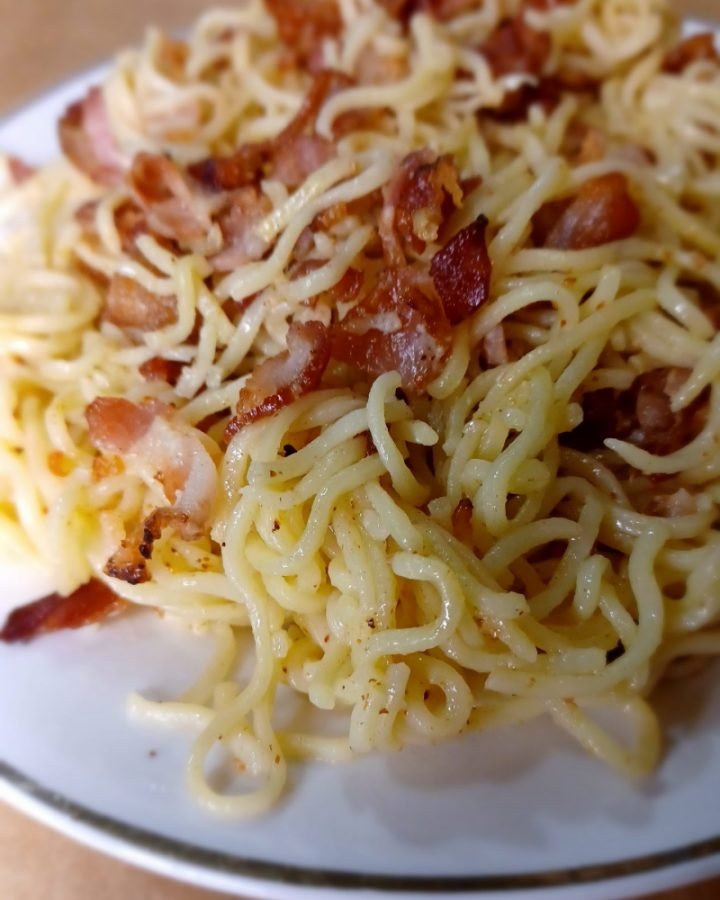Bananas are one tasty, and convenient to carry fruit anyone can have at any time of the day. They are also available across seasons and easy to pair with other foods. Well, there is more, and I will be sharing with you 6 reasons why you should eat bananas regularly. Let’s fine out in the sections that follow.
Bananas (Musa spp.) are tropical fruits of Australia and Indomalaya origin. They are long and curved, green in color when unripe and yellow when ripe. Bananas are popularly eaten whole when ripe or sliced and eaten together with other fruits and vegetables or yoghurt. Additionally, ripe bananas can also be used to manufacture banana beer, banana wine and fiber. Unripe bananas on the other hand are cooked and eaten as a side dish or as porridge (1).
Nutrition composition of banana
The table below shows the nutrition composition of ripe and unripe bananas per 100g serving (2, 3).
| Name | Ripe | Unripe |
| Energy | 97 calories | 89 calories |
| Water | 75.3g | 74.9g |
| Protein | 0.7g | 1.1g |
| Carbohydrates | 23g | 22.8g |
| Fat | 0.3g | 0.3g |
| Fiber | 1.7g | 2.6g |
6 Reasons why you should eat bananas
Bananas have a rich nutrient profile which accounts for their numerous health benefits. Below are 6 reasons why you should eat bananas regularly.
To boost gut health
Bananas are a rich source of soluble fiber and resistant starch, which are both indigestible carbohydrates. These reach the large intestines intact where they serve as food for healthy bacteria that live there.
A large population of healthy bacteria is good for the body as they phase out disease causing bacteria which cause damage to the intestinal walls.
Eating bananas regularly will therefore help to maintain the integrity of the gut and boost the overall immune system of the body (4).
To improve blood pressure
The potassium content in banana is quite high: 258mg per 100g serving of ripe banana and 358mg per 100g serving of unripe banana (2, 3).
Potassium plays a critical role in regulating the body’s blood pressure by balancing sodium levels. The more potassium a person eats, the more they send out sodium from their body through their urine (5).
Besides, potassium also has a vasodilatory (widening) effect on the blood vessels. This allows more room for blood to flow easily, which ultimately reduces blood pressure (5, 6).
For the heart to function at its best, it is pivotal to maintain a normal blood pressure as an elevated blood pressure increases a person’s risk for developing heart disease and stroke (6).
Furthermore, bananas contain magnesium in moderate amounts, which has also been proven to help regulate blood pressure. Magnesium stimulates the body to produce nitric oxide gas which also has a vasodilatory effect on the blood vessels (7).
To normalize blood sugar
The fiber contained in banana is not digested by enzymes in the small intestines. This means it is not absorbed into the blood stream either to increase blood sugar levels (8).
Also, banana contains resistant starch which is not digested and absorbed either. These two indigestible carbohydrates (fiber and resistant starch) account for the low glycemic index status of bananas (9).
In some research studies, including resistant starch in the diets of diabetic patients improved their insulin sensitivity and blood sugar control (9).
To enhance brain health
Bananas are a good source of vitamin B6, which enables proper brain development. It is involved in the production of neurotransmitters (chemical messengers) whose role is to convey chemical signals from one nerve cell to the next target nerve cell (10).
Besides, vitamin B6 helps to regulate energy usage in the brain (10).
To help manage weight
Bananas do not contain too many calories as a 100g serving of ripe banana only gives 97 calories. It also contains negligible amounts of fat (0.3g of fat per 100g serving of ripe or unripe banana) (2, 3).
Farther, bananas contains a small amount of carbohydrates (23g for a 100g serving of ripe banana), some of which is fiber and resistant starch that are neither digested nor absorbed in the body (2).
Besides, soluble fiber dissolves in water when eaten to form a sticky gel that generally slows down the movement of food from the stomach to the intestines. This delayed stomach emptying keeps a person feeling full for longer (11).
To help prevent cancer
Bananas contain a good amount of vitamin C (9.7mg per 100g serving of ripe banana) which is a potent antioxidant (2).
Antioxidants are substances that capture bad atoms in the body called free radicals. These free radicals cause excessive oxidation reactions in the body which eventually lead to oxidative stress, damaging body cells (12).
Oxidative stress is involved in the development of certain cancers, and cardiovascular disease amongst others (12).
Recommendations for eating bananas
The USDA (United States Department of Agriculture) recommends that people eat about two bananas daily (13).
Possible side effects of eating bananas
After discussing the 6 reasons why you should eat bananas regularly, it is important to eat bananas with moderation. Eating too many bananas can induce acid reflux and consequently heart burn in sensitive people.
In addition, bananas contain a class of sugars called FODMAPs (fermentable oligosaccharides, disaccharides, monosaccharides, and polyols), which some people are intolerant to.
FODMAPs intolerant people that consume bananas may display symptoms like bloating, stomach cramps, diarrhea, flatulence and constipation (14).
References
- Banana. (n.d.). Retrieved April 12, 2023, from Archive.org website: https://web.archive.org/web/20090415160027/http://www.hort.purdue.edu/newcrop/morton/banana.html
- FoodData central. (n.d.). Retrieved April 12, 2023, from Usda.gov website: https://fdc.nal.usda.gov/fdc-app.html#/food-details/168482/nutrients
- FoodData Central. (n.d.). Usda.Gov. Retrieved April 12, 2023, from https://fdc.nal.usda.gov/fdc-app.html#/food-details/1102653/nutrients
- Powthong, P., Jantrapanukorn, B., Suntornthiticharoen, P., & Laohaphatanalert, K. (2020). Study of prebiotic properties of selected banana species in Thailand. Journal of Food Science and Technology, 57(7), 2490–2500. https://doi.org/10.1007/s13197-020-04284-x
- basolateral K+ channels: Contribution of renal basolateral K + channels. Hypertension, 71(6), 1015–1022. https://doi.org/10.1161/HYPERTENSIONAHA.118.10267
- Haddy, F. J., Vanhoutte, P. M., & Feletou, M. (2006). Role of potassium in regulating blood flow and blood pressure. American Journal of Physiology. Regulatory, Integrative and Comparative Physiology, 290(3), R546-52. https://doi.org/10.1152/ajpregu.00491.2005
- Houston, M. (2011). The role of magnesium in hypertension and cardiovascular disease: Magnesium, hypertension, and cardiovascular disease. Journal of Clinical Hypertension (Greenwich, Conn.), 13(11), 843–847. https://doi.org/10.1111/j.1751-7176.2011.00538.x
- Marlatt, K. L., White, U. A., Beyl, R. A., Peterson, C. M., Martin, C. K., Marco, M. L., Keenan, M. J., Martin, R. J., Aryana, K. J., & Ravussin, E. (2018). Role of resistant starch on diabetes risk factors in people with prediabetes: Design, conduct, and baseline results of the STARCH trial. Contemporary Clinical Trials, 65, 99–108. https://doi.org/10.1016/j.cct.2017.12.005
- Resistant starch and diabetes. (n.d.). Retrieved May 15, 2022, from Glycemicindex.com website: https://glycemicindex.com/2021/07/resistant-starch-and-diabetes/
- Kennedy, D. O. (2016). B vitamins and the brain: Mechanisms, dose and efficacy–A review. Nutrients, 8(2), 68. https://doi.org/10.3390/nu8020068
- Slavin, J. (2013). Fiber and prebiotics: mechanisms and health benefits. Nutrients, 5(4), 1417–1435. https://doi.org/10.3390/nu5041417
- Vitamin C. (n.d.). Nih.Gov. Retrieved April 12, 2023, from https://ods.od.nih.gov/factsheets/VitaminC-HealthProfessional/
- Fruits. (n.d.). Retrieved April 12, 2023, from Myplate.gov website: https://www.myplate.gov/eat-healthy/fruits
- Medical, S., & Logo, C. (2010). Hawaii Pacific Health: The Low FODMAP Diet – Reducing Poorly Absorbed Sugars to Control Gastrointestinal Symptoms. Eastern Health Clinical School – Monash University. Retrieved April 25, 2022, from Hawaiipacifichealth.org website: https://www.hawaiipacifichealth.org/media/1352/pediatric-gastroenterology-low-fodmap-diet.pdf





Leave a Reply